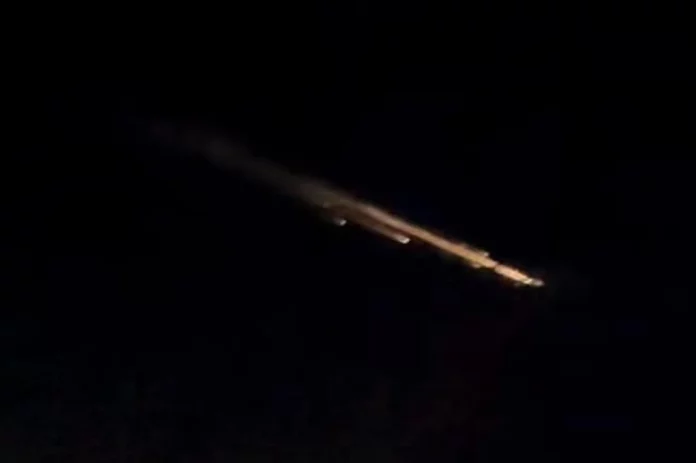Hundreds of astronomers reported fireballs over the southeastern United States earlier this week. But this was not a natural phenomenon – just another case of dead satellites littering the Earth’s orbit.
The fireworks were caused by a defunct Chinese satellite that re-entered the Earth’s atmosphere on Saturday night and burned up over New Orleans, Louisiana. According to online reports, bright streaks appeared in the sky over several states, including Missouri, Arkansas, and Mississippi, after the satellite re-entered the atmosphere. Although the satellite did not pose a threat to viewers, its uncontrolled re-entry underscores the need for better regulation of non-working space debris.
The American Meteor Society received 152 eyewitness accounts of seeing a fireball around 11 p.m. ET on December 22, but dismissed the event as “not a real fireball.” Later, astrophysicist Jonathan McDowell identified the source of the fireball as a Chinese satellite, SuperView 1-02, which re-entered the atmosphere over New Orleans and then headed north, he wrote on X.
SuperView 1-02 was operated by Beijing-based SpaceView and was launched in December 2016 as one of two satellites belonging to a constellation for civilian remote sensing. According to Space.com, these two satellites were the first Chinese satellites to take high-resolution images of the Earth. They were initially placed in the wrong orbit, ending up in an elliptical orbit instead of a circular one, and had to be gradually raised to begin their mission.
SuperView 1-02 was decommissioned about two years ago and left to re-enter the Earth’s atmosphere uncontrolled. Some satellite operators equip spacecraft with the ability to make controlled reentry to minimize risk, but China is known for poor orbital etiquette. The South China Morning Post downplayed the incident, saying that the satellite’s reentry “created a spectacular light show but posed no real danger,” adding that “the event was unintentional.”
Inoperable satellites wandering around Earth orbit pose a serious risk of collision with other spacecraft. The U.S. Department of Defense’s Global Space Surveillance Network tracks more than 27,000 pieces of orbital debris, with many smaller pieces also flying around us undetected. Traveling at high speeds, even smaller debris such as micrometeoroids can threaten operational spacecraft in orbit.
The European Space Agency (ESA) is developing ways to improve the re-entry capabilities of spacecraft to help reduce the amount of orbital debris. The Containerized Reentry Assessment Object (DRACO), scheduled for launch in 2027, is a satellite designed to collect data during reentry after a short mission. A better understanding of re-entry science can help scientists design future spacecraft that do not risk damaging other vehicles in space when they are decommissioned.









